
How to Use Módulo LoRa SOC RF ASR6601 LR01-A: Examples, Pinouts, and Specs
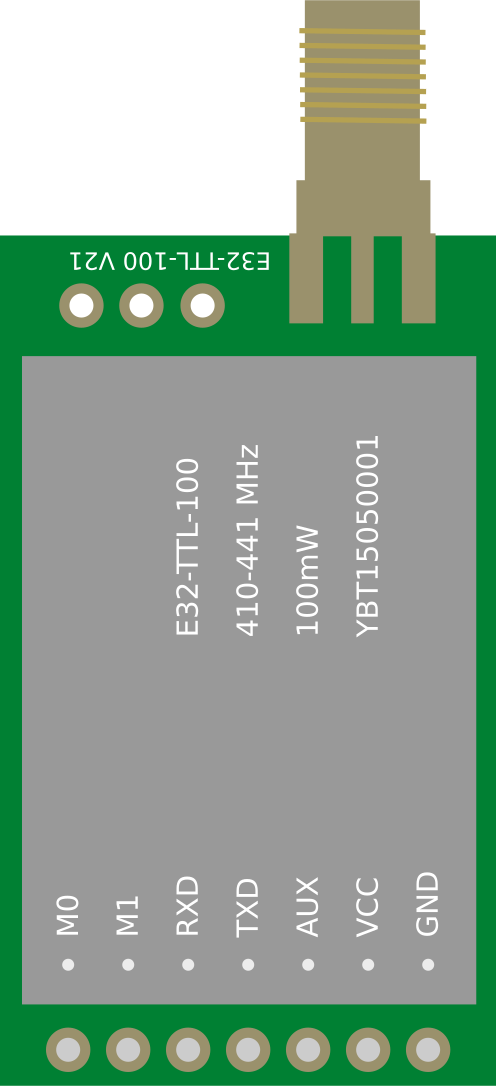
 Design with Módulo LoRa SOC RF ASR6601 LR01-A in Cirkit Designer
Design with Módulo LoRa SOC RF ASR6601 LR01-A in Cirkit DesignerIntroduction
The Módulo LoRa SOC RF ASR6601 LR01-A is a compact, low-power module designed for long-range wireless communication using LoRa (Long Range) technology. It integrates the ASR6601 System on Chip (SoC), which combines a LoRa transceiver and an ARM Cortex-M0+ microcontroller, making it ideal for Internet of Things (IoT) applications. This module is widely used in scenarios requiring low-power, long-range communication, such as smart agriculture, industrial automation, smart cities, and environmental monitoring.
Explore Projects Built with Módulo LoRa SOC RF ASR6601 LR01-A
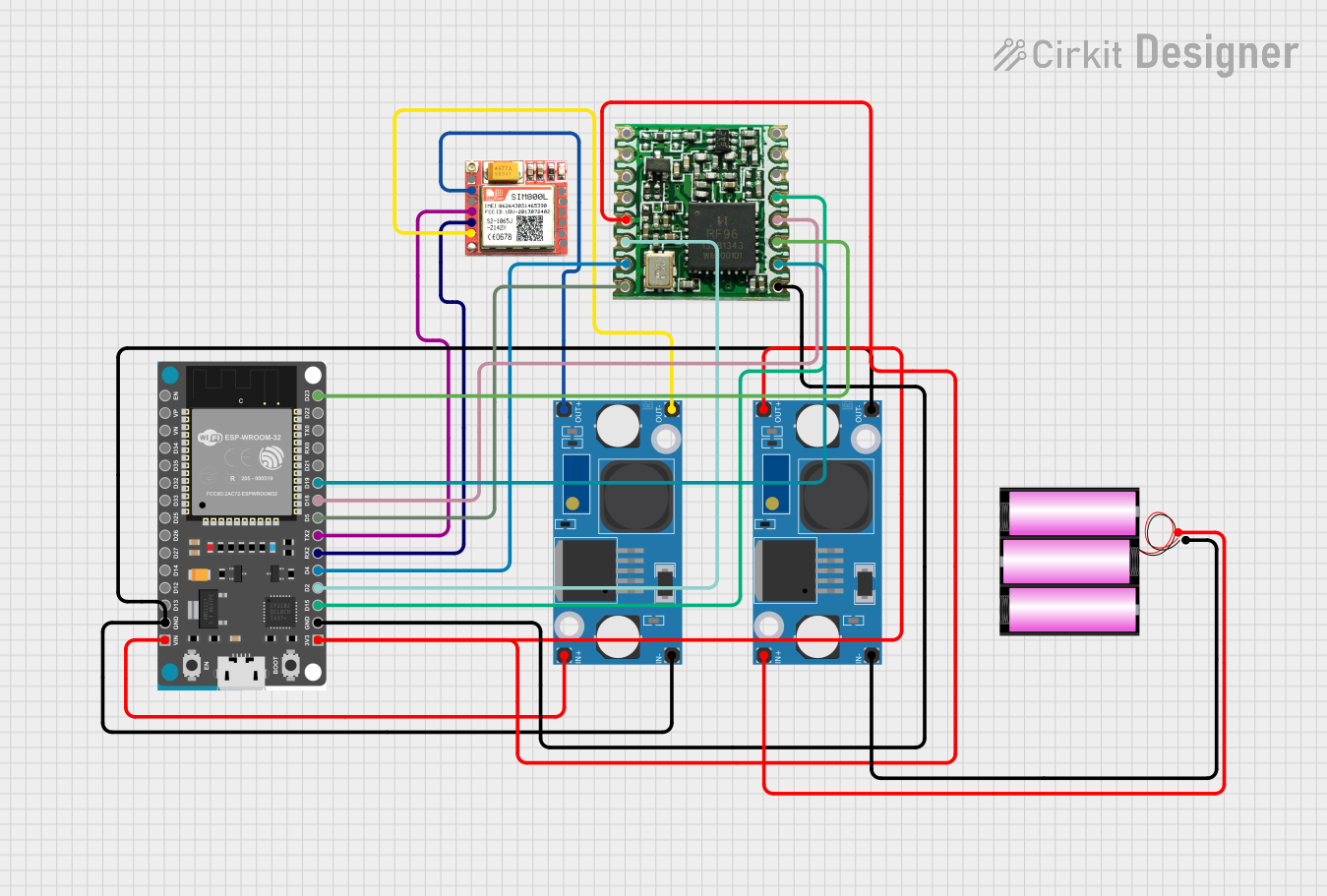
 Open Project in Cirkit Designer
Open Project in Cirkit Designer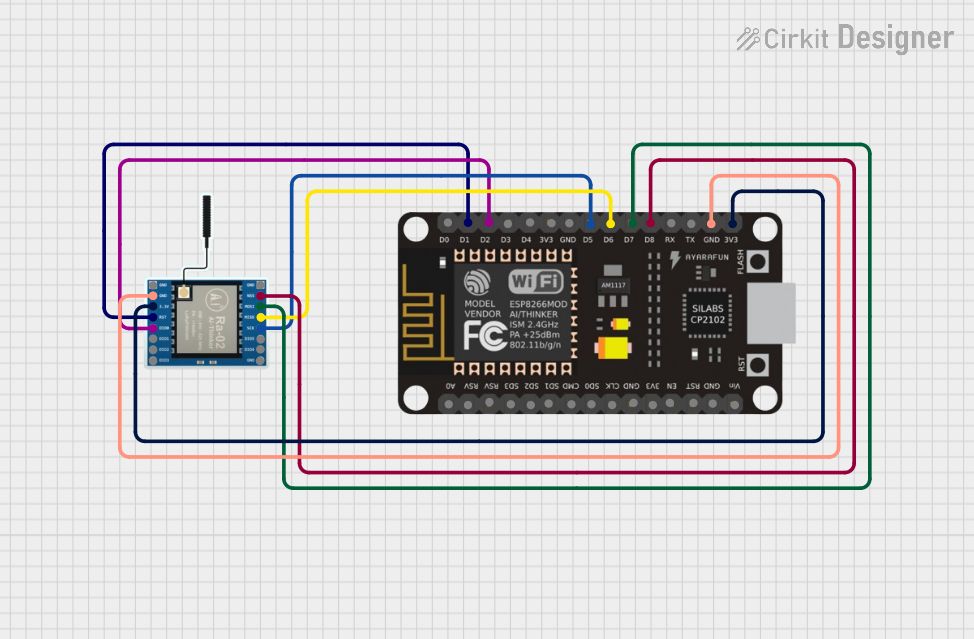
 Open Project in Cirkit Designer
Open Project in Cirkit Designer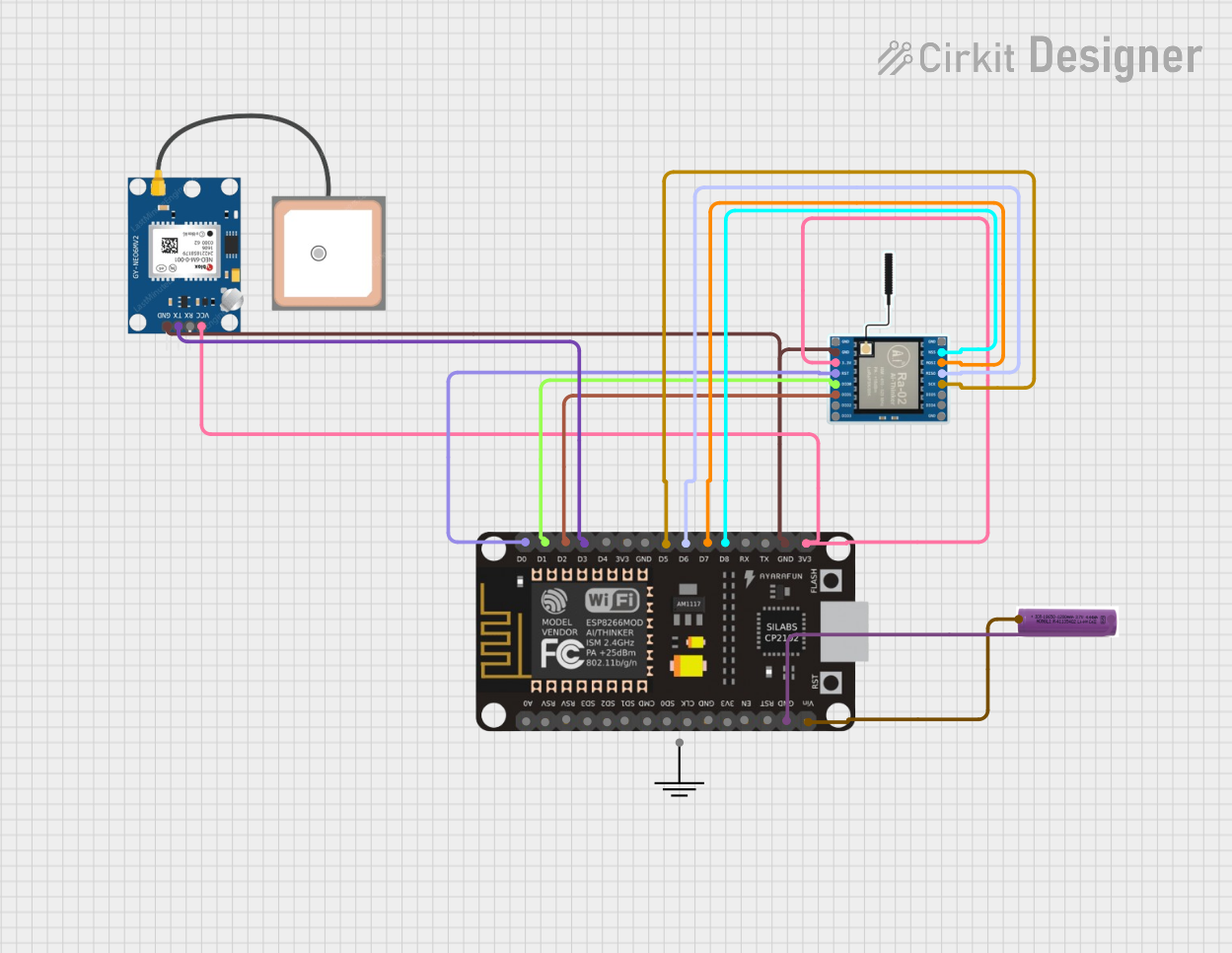
 Open Project in Cirkit Designer
Open Project in Cirkit Designer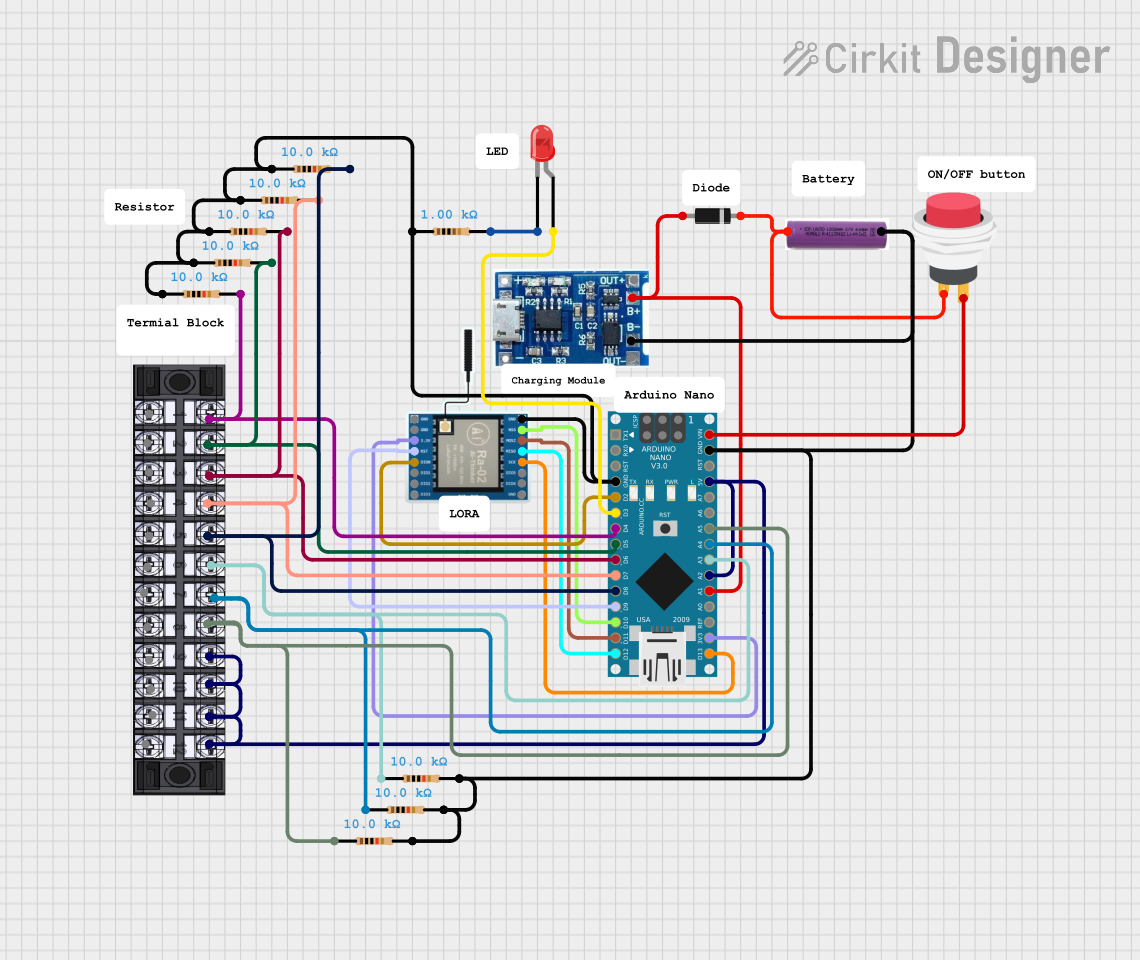
 Open Project in Cirkit Designer
Open Project in Cirkit DesignerExplore Projects Built with Módulo LoRa SOC RF ASR6601 LR01-A

 Open Project in Cirkit Designer
Open Project in Cirkit Designer
 Open Project in Cirkit Designer
Open Project in Cirkit Designer
 Open Project in Cirkit Designer
Open Project in Cirkit Designer
 Open Project in Cirkit Designer
Open Project in Cirkit DesignerCommon Applications and Use Cases
- Smart Agriculture: Remote monitoring of soil moisture, temperature, and other parameters.
- Industrial Automation: Wireless sensor networks for machine monitoring and control.
- Smart Cities: Applications like parking management, streetlight control, and waste management.
- Environmental Monitoring: Collecting data from remote sensors for air quality, water levels, etc.
- Asset Tracking: Long-range tracking of goods, vehicles, or equipment.
Technical Specifications
The following table outlines the key technical specifications of the Módulo LoRa SOC RF ASR6601 LR01-A:
| Parameter | Specification |
|---|---|
| Chipset | ASR6601 (LoRa SoC with ARM Cortex-M0+) |
| Frequency Range | 150 MHz to 960 MHz |
| Modulation | LoRa, (G)FSK, (G)MSK, BPSK |
| Output Power | Up to +22 dBm |
| Sensitivity | -137 dBm (LoRa, SF12, 125 kHz BW) |
| Operating Voltage | 1.8V to 3.6V |
| Current Consumption | 4.2 µA (Sleep Mode), 4.8 mA (Receive), 22 mA (TX) |
| Operating Temperature | -40°C to +85°C |
| Communication Interface | SPI, UART |
| Dimensions | 17.8 mm x 12.8 mm x 2.3 mm |
Pin Configuration and Descriptions
The module has a set of pins for power, communication, and control. Below is the pinout description:
| Pin Number | Pin Name | Description |
|---|---|---|
| 1 | VCC | Power supply input (1.8V to 3.6V) |
| 2 | GND | Ground |
| 3 | RESET | Reset pin (active low) |
| 4 | SPI_MOSI | SPI Master Out Slave In |
| 5 | SPI_MISO | SPI Master In Slave Out |
| 6 | SPI_SCK | SPI Clock |
| 7 | SPI_NSS | SPI Chip Select (active low) |
| 8 | UART_TX | UART Transmit |
| 9 | UART_RX | UART Receive |
| 10 | ANT | RF Antenna connection |
Usage Instructions
How to Use the Component in a Circuit
- Power Supply: Connect the VCC pin to a regulated power source (1.8V to 3.6V) and the GND pin to the ground.
- Antenna Connection: Attach a suitable LoRa antenna to the ANT pin for optimal signal transmission and reception.
- Communication Interface: Use either the SPI or UART interface to communicate with the module. For SPI, connect the SPI_MOSI, SPI_MISO, SPI_SCK, and SPI_NSS pins to the corresponding pins on your microcontroller. For UART, connect UART_TX and UART_RX.
- Reset: Optionally, connect the RESET pin to a GPIO pin on your microcontroller for manual or software-controlled resets.
Important Considerations and Best Practices
- Antenna Placement: Ensure the antenna is placed away from other components to avoid interference.
- Power Supply: Use a stable and noise-free power supply to ensure reliable operation.
- Firmware Updates: Check for firmware updates for the ASR6601 to ensure compatibility and performance.
- Regulatory Compliance: Ensure the module operates within the frequency bands and power levels allowed in your region.
Example: Connecting to an Arduino UNO
Below is an example of how to connect the module to an Arduino UNO using the SPI interface:
| ASR6601 Pin | Arduino UNO Pin |
|---|---|
| VCC | 3.3V |
| GND | GND |
| SPI_MOSI | D11 (MOSI) |
| SPI_MISO | D12 (MISO) |
| SPI_SCK | D13 (SCK) |
| SPI_NSS | D10 (CS) |
| RESET | D9 |
Arduino Code Example
#include <SPI.h>
// Define pin connections
#define NSS_PIN 10 // SPI Chip Select
#define RESET_PIN 9 // Reset pin
void setup() {
// Initialize serial communication
Serial.begin(9600);
// Initialize SPI
SPI.begin();
// Configure NSS and RESET pins
pinMode(NSS_PIN, OUTPUT);
pinMode(RESET_PIN, OUTPUT);
// Reset the module
digitalWrite(RESET_PIN, LOW);
delay(100);
digitalWrite(RESET_PIN, HIGH);
delay(100);
Serial.println("LoRa module initialized.");
}
void loop() {
// Example: Send a command to the module
digitalWrite(NSS_PIN, LOW); // Select the module
SPI.transfer(0x01); // Example command
digitalWrite(NSS_PIN, HIGH); // Deselect the module
delay(1000); // Wait for 1 second
}
Troubleshooting and FAQs
Common Issues and Solutions
- No Communication with the Module:
- Solution: Verify the SPI or UART connections. Ensure the correct pins are connected and the communication protocol is configured properly in your code.
- Low Signal Strength:
- Solution: Check the antenna connection and placement. Use a high-quality antenna and ensure it is not obstructed.
- Module Not Responding:
- Solution: Ensure the module is powered correctly. Try resetting the module using the RESET pin.
- High Power Consumption:
- Solution: Verify that the module is entering sleep mode when not in use. Check your firmware configuration.
FAQs
- Can this module be used with 5V microcontrollers?
- No, the module operates at 1.8V to 3.6V. Use a level shifter for 5V microcontrollers.
- What is the maximum range of this module?
- The range depends on environmental factors but can reach up to 15 km in open areas.
- Does the module support encryption?
- Yes, the ASR6601 supports AES-128 encryption for secure communication.
By following this documentation, you can effectively integrate the Módulo LoRa SOC RF ASR6601 LR01-A into your IoT projects.